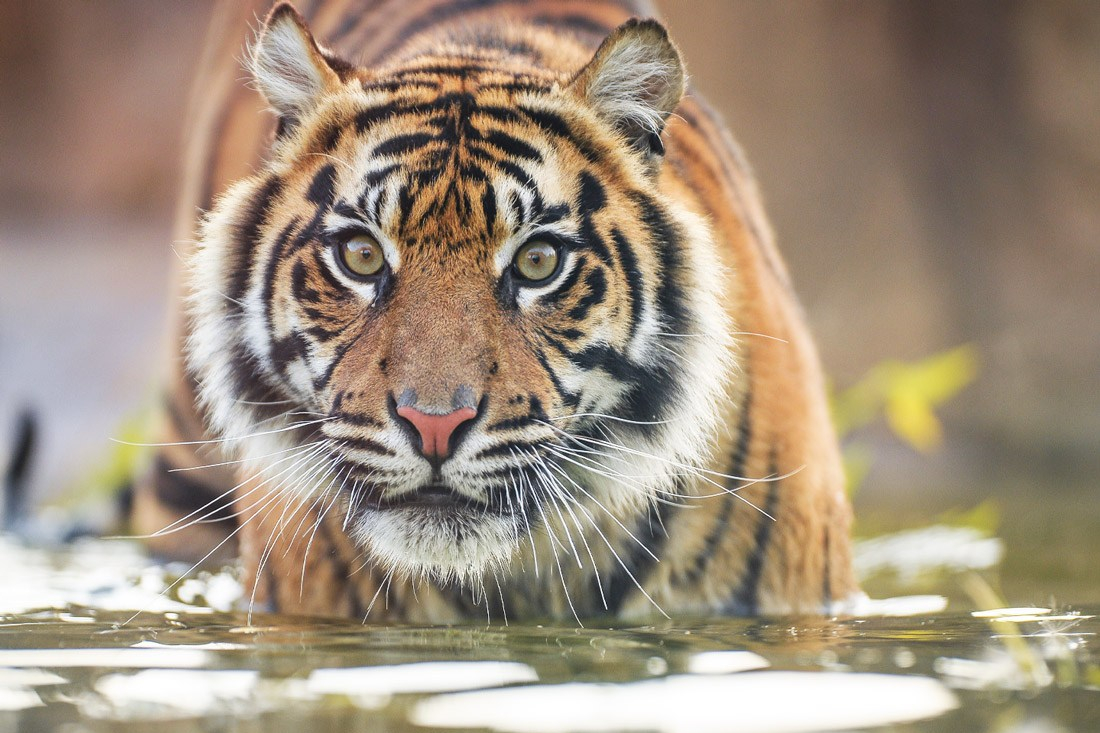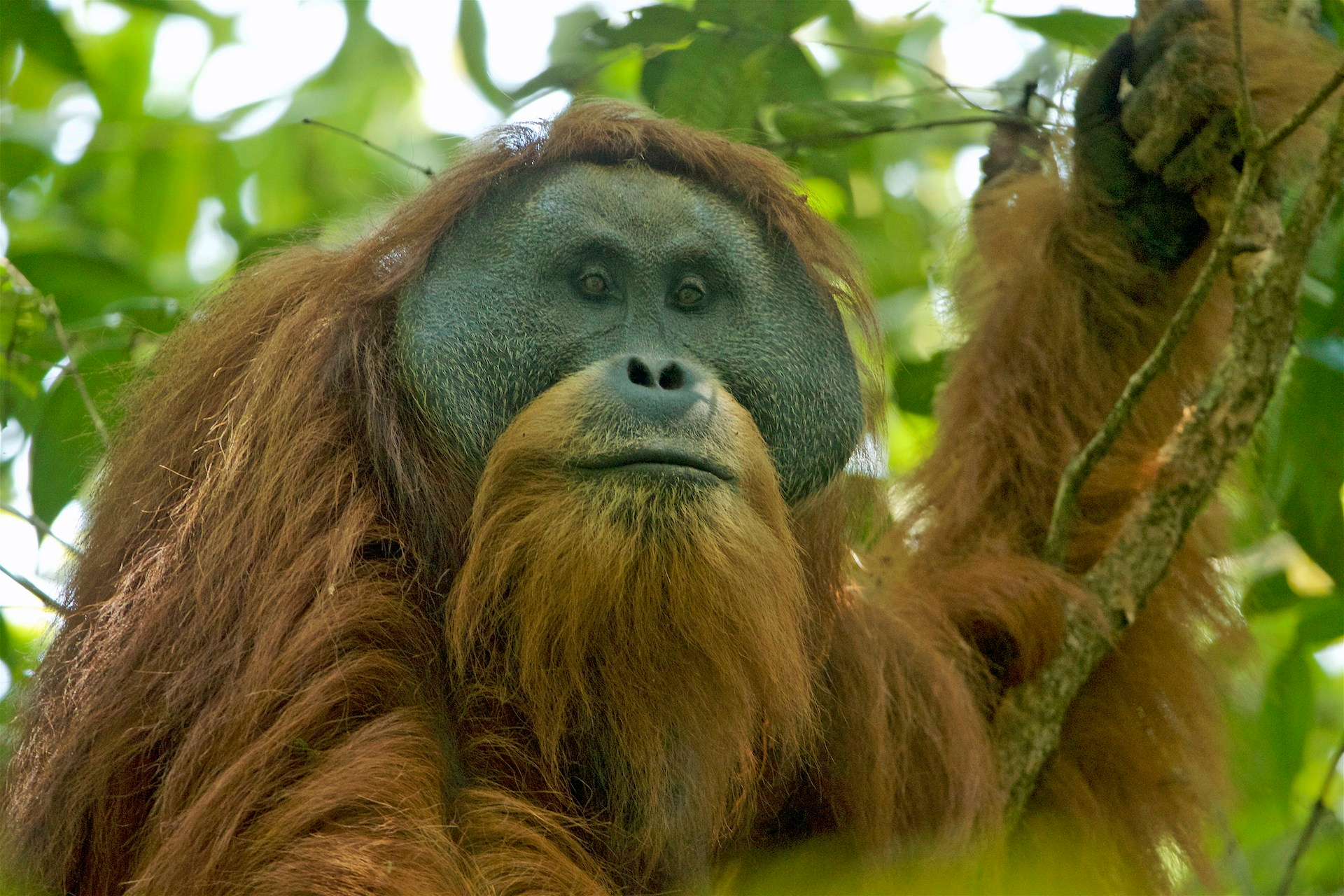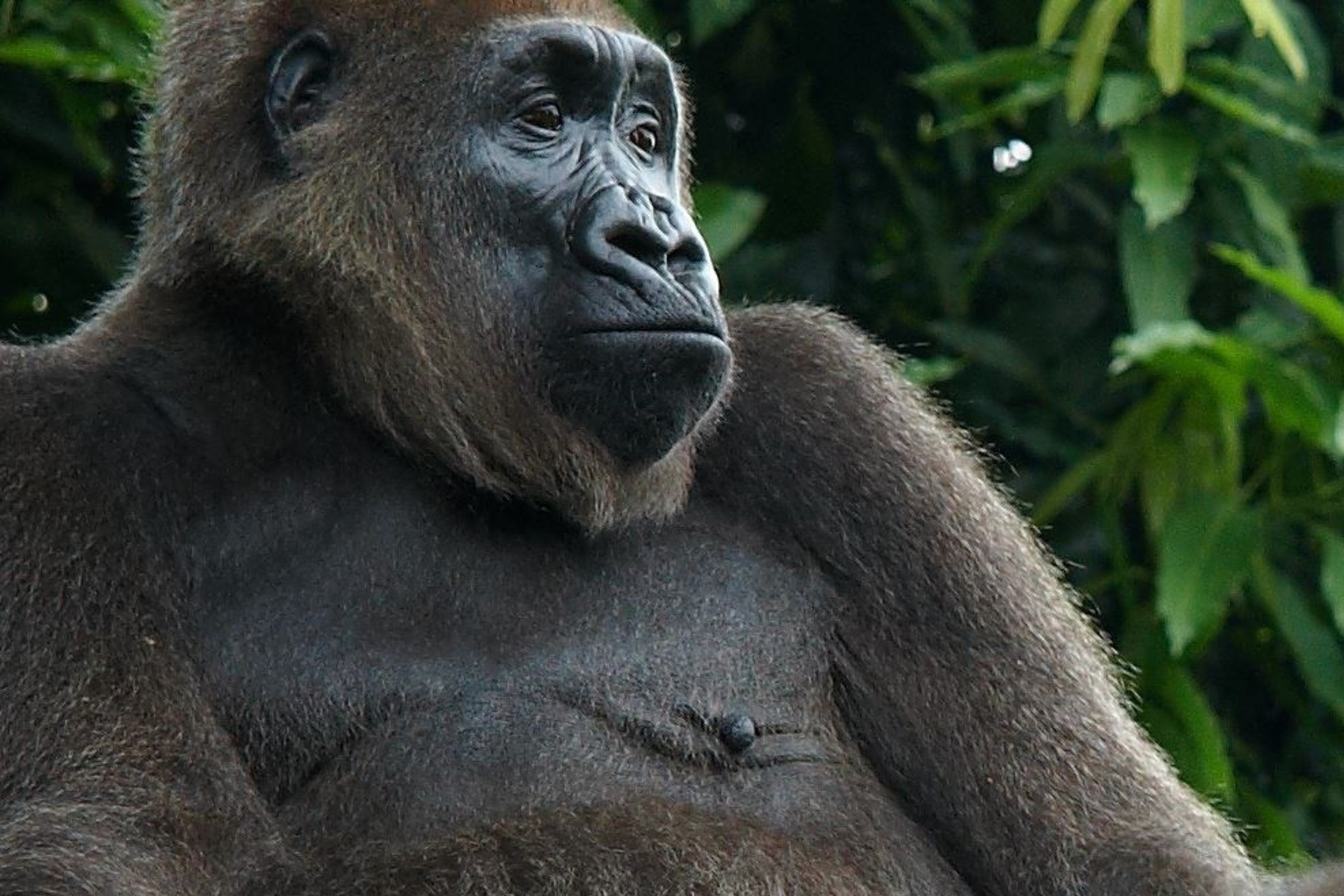(Malayan Tiger | Photo: Houston Zoo)
Humans are the biggest threats to any other species on Earth. And that what makes some of them endangered, especially extinct. Human activities-related causes such as poaching, habitat destruction and degradation, the introduction of non-native species, over-exploitation, pollution, disease, and many others do harm other species’ survival.
And now human-caused climate change is being considered as a threat because of its ability to alter the food sources, native range, predator-prey relationships, and reproduction rates among species.
The IUCN uses four categories to measure how close a species is to extinction. These include: Vulnerable, Endangered, Critically Endangered, and Extinct in the Wild. And the IUCN Red List of Threatened Species is the world’s most comprehensive information source on the global conservation status of species. You should look at it.
Of course, there are a whole lot of other endangered species that don’t listed here. Here are some of the world’s most endangered animals that we should know, learn, and protect to preserve biodiversity and nature.
Tigers

Since 2017, the IUCN has recognized two tiger subspecies, the Sunda island tiger and the continental tiger. The Sunda island tiger comprises Bali, Javan, and Sumatran tiger. The continental tiger comprises Caspian, South China, Malayan, Bengal, Indochinese, and Amur (Siberian) tiger populations.
1. The Bali tiger is most likely extinct in the 1950s
The Bali tiger is classified as Extinct. It likely became extinct in the 1940s or possibly as late as the early 1950s. There are no Bali tigers in captivity. The causes include habitat loss, loss of prey base, and hunting.
2. The Javan tiger is most likely extinct in the 1970s
The Javan tiger is classified as Extinct. Last positive sightings recorded from Java’s Meru Betiri National Park in 1976. It likely became extinct in the mid-1970s. There are no Javan tigers in captivity. The causes include habitat loss, loss of prey base, and hunting.
3. The Caspian tiger is most likely extinct in the 1970s
The Caspian tiger is classified as Extinct. Last records in the wild is in the early 1970s and none in captivity. Its extinction might attributed to habitat loss and conversion, hunting of both tigers and their prey, and small populations increasing vulnerability.
4. The South China tiger is most likely extinct in the 1970s
The South China tiger is thought to be extinct in the wild. It is classified as Critically Endangered. In the 1950s, its population estimated at over 4,000. By 1982, only 150-200 remained. It hasn’t been spotted in the wild since the 1970s. Its continued survival is unlikely due to habitat degradation and fragmentation, low prey density, and other human pressures.
5. By 2022, the Malayan tiger could go extinct
The Malayan tiger is classified as Critically Endangered and its population trend is decreasing. In the 1950s, the estimated population is 3,000. In 2013, only 250-340 remained. Now, only 200 left and it could go extinct by 2022, warn conservationist. Its primary threat is poaching for illegal trade in tiger products such as skins, bones, meat, and tonics, and habitat destruction.
6. The Sumatran tiger is on the verge of extinction
The Sumatran tiger is classified as Critically Endangered and its population trend is decreasing. The estimated population is up to 1,000 in 1978. In 1994-2007, only 400-500 remained. Its decline due to high rates of habitat loss and fragmentation caused by the expansion of oil palm and Acacia plantations, illegal trade in tiger parts, and human-tiger conflict.
Leopard

Modern taxonomic analyses have recognized seven to nine leopard subspecies. The nine subspecies comprises Amur, Indo-Chinese, Indian, North China, Sri Lanka, Java, African, Persian, and Arabian leopard populations.
7. Fewer than 80 individuals of the Amur leopard left in the wild
The Amur leopard is classified as Critically Endangered and its population trend is decreasing. As of 2019, more than 84 individuals are in the wild and 170-180 in captivity. Its primary causes for their low population are extensive poaching for its fur and habitat destruction from logging and farming.
Elephant

Three distinct types of recognized elephant species are the African bush (savannah) elephant, the African forest elephant, and the Asian elephant. The Asian elephant comprises Sri Lankan, Indian, and Sumatran elephant.
8. In 2012, the Sumatran elephant status was changed to Critically Endangered
The Sumatran elephant status changed from Endangered to Critically Endangered in 2012 because 50% of its population has been lost in one generation. Now, its population estimated at around 2,400-2800 individuals. Its main threats are deforestation and habitat loss. As a result, it creates human-elephant conflict like wandering into human encampments.
Rhinos

There are 11 known rhinos species in the world. Six have become extinct and five still exist today. They are the White rhino, the Indian rhino, the Javan rhino, the Sumatran rhino, and the Black rhino.
9. No more than 68 individuals of the Javan rhino left in the wild
The Javan rhino is classified as Critically Endangered with only 46-66 mature individuals left in Indonesia’s Ujung Kulon National Park. There is no Javan rhino currently in captivity. Its population decline caused by poaching for the excessive demand for rhino horns and Chinese medicine.
10. The last male Sumatran rhino in Malaysia has died in 2019
The Sumatran rhino is classified as Critically Endangered with the current population trend is decreasing. Now, the total population is estimated at fewer than 80 after Malaysia’s last male died in 2019. There are over 20 Sumatran rhino in captivity. The two biggest threats are poaching and reduced population viability.
11. 3 out of 4 Black rhino subspecies already extinct
The Black rhino is classified as Critically Endangered with three out of four subspecies declared extinct in 2011. Since 1960, the population has declined by 97.6% with numbers bottoming out at 2,410 in 1995. However, the numbers have been increasing to 4,880 in 2010. But it still 90% lower than three generations ago. Until now, poaching for rhino horn remains a threat.
Orangutans

There are three recognized species of orangutans, which the newest was introduced in 2017. The Bornean orangutan, the Sumatran orangutan, and the Tapanuli orangutan.
The Bornean orangutan is divided into three subspecies: the central Bornean orangutan, the northwest Bornean orangutan, and the northeast Bornean orangutan. And only a single species of Sumatran orangutan and Tapanuli orangutan is recognized.
12. By 2025, the Bornean orangutan population is expected to fall by a further 22%
The Bornean orangutan is classified as Critically Endangered. Its population has fallen by more than 60% between 1950-2010. And is expected to fall by a further 22% by 2025. Now, there are an estimated 104,700 individuals left. Since the mid-20th century, human activities such as hunting, logging, land conversion, and mining has been its main threats.
13. The Sumatran orangutan is on the verge of extinction
The Sumatran orangutan is classified as Critically Endangered. Between 1985-2007, its total population dropped by more than 60%. Now, it is estimated that there are only 14,613 individuals left in the wild. Its primary threats is human activities such as hunting and habitat loss due to forest fire and mass land conversion to oil palm plantations.
14. Only 800 of Tapanuli orangutan remains in the wild
The newly described Tapanuli orangutan exists in the Batang Toru forests in Sumatra, Indonesia. Its Red List status currently being assessed. It was initially found by scientists in 1997 but wasn’t confirmed as a separate species until 2017. Its population is around 800 individuals. Threats are due to small population, slow reproduction levels, and habitat destruction.
Gorillas

There are two recognized gorilla species. the Eastern gorilla and the Western gorilla. The Eastern gorilla comprises the Eastern Lowland and the Mountain gorilla. The Western gorilla comprises the Western Lowland and the Cross River gorilla.
15. Since the 1990s, the Eastern Lowland gorilla population has declined by more than 50%
The Eastern Lowland gorilla or Grauer’s gorilla is classified as Critically Endangered. Scientists estimate that more than 50% of its population has declined since the 1990s. In that time, their population numbered 17,000. The accurate population numbers have been impossible to account for many years because of years of civil unrest in the Democratic Republic of Congo.
16. It would require 75 years for the Western Lowland gorilla population to recover without any threats
The Western Lowland gorilla is classified as Critically Endangered. Over the last 20-25 years, its numbers have declined by more than 60%. Its exact number is not known. The primary threats are due to poaching, and Ebola virus which has killed one-third of mostly western lowland gorillas. Even if all threats were removed, it takes 75 years for their population to recover.
17. Fewer than 300 individuals of the Cross River gorilla are left in the wild
The Cross River gorilla is classified as Critically Endangered. Researchers estimated there are only about 200-300 individuals left in the wild. The main threats are illegal hunting and killing, and inbreeding that cause a loss of genetic diversity.
Pangolins

Pangolins are the most trafficked mammals in the world. There are eight species, four found in Asia: Chinese, Sunda, Philippine, and Indian; and the other four in Africa: (Black-bellied, White-bellied, Giant Ground, and Temminck’s Ground). They are hunted for their meat and medicine from their scales. Their scales can be sold on the black market for up to $3,000 per kg.
18. The Chinese pangolin and other pangolins species are the most trafficked mammals in the world
The Chinese pangolin is classified as Critically Endangered. There is no available information for its population numbers due to it is being secretive, solitary, and nocturnal; and also its increasing rarity. This species is hunted for its meat which is considered a delicacy and its scales and skin for traditional medicine.
19. The Sunda pangolin and other pangolins species are the most trafficked mammals in the world
The Sunda pangolin Red List status has declined from Near Threatened in 1994 to Critically Endangered in 2014. There are no reliable population estimates, like much other pangolins species, they tend to be shy, solitary, and nocturnal. Same as many pangolins species, they are hunted for its meat which is considered a delicacy and its scales and skin for traditional medicine.
Saola

20. The saola population could drift to extinction in the next 10 to 15 years
The saola is just discovered in May 1992 in Vietnam. It is classified as Critically Endangered. In the next 10-15 years, saola subpopulations could drift to extinction, according to the Saola Working Group analysis. The primary threats are hunting and habitat loss. Habitat loss is caused by agriculture, plantations, and infrastructure that makes their habitat getting smaller.
Sea turtle

There are seven living species of sea turtles. The Loggerhead turtle, the Green turtle, the Leatherback turtle, the Hawksbill turtle, the Kemp’s ridley turtle, the Olive ridley turtle, and the Flatback turtle.
21. From 1844-1992, nearly 9 million of Hawksbill turtle were hunted
The Hawksbill turtle is classified as Critically Endangered with the population trend is decreasing. Nearly 9 million hawksbills were hunted for their shells from 1844-1992. Now, it estimated there are fewer than 25,000 nesting females left. They are most threatened by illegal wildlife trade. Other threats such as fisheries bycatch, and the loss of nesting and feeding habitats.
Porpoises

There are seven recognized species of porpoises: the Indo-Pacific finless porpoise, the Narrow-ridged finless porpoise, the Spectacled porpoise, the Harbor porpoise, the Vaquita, the Burmeister’s porpoise, and the Dall’s porpoise. The Narrow-ridged finless porpoise subspecies are the Yangtze finless porpoise and the East Asian finless porpoise.
22. The Yangtze Finless porpoise is now at extremely high risk of extinction
The Yangtze Finless porpoise is classified as Critically Endangered. Now, there are only around 1,000-1,800 of them left and it is at high risk of extinction. The main threats are overfishing that reduces their prey, pollution, and ship movement. Finless porpoise needs an abundant food supply for survival.
23. Only around 10 Vaquita remain in the wild in 2018
The Vaquita is classified as Critically Endangered. It is the world’s rarest marine mammal. Since 2011, the total population has been declining by 98%. It estimated there are only about 10 individuals remain in 2018, according to the 2019 CIRVA report. The primary threats are fisheries bycatch. 1 in 5 vaquita get entangled and drown in gillnets intended for other marine species.
References:
OneKind Planet. “Top 10 Most Endangered Animals.” →
Pallardy, R. “Falling Stars: 10 of the Most Famous Endangered Species.” Encyclopedia Britannica. →
Wanderlust. 2018. “10 of the World’s Most Endangered Animals.” March 8. →
Watling, E. 2018. “The Most Endangered Animals on the Planet – and Why They Remain Under Threat.” Newsweek. February 8. →
World Wildlife Fund. “Species List.” →


Great post! How foolish we humans are to believe that this planet belongs only to us!
LikeLike
Yeah, right?
LikeLike
Great article, I am going to reblog this one for you.
LikeLike
Thank you!
LikeLike
Reblogged this on MagickMermaid.
LikeLike
Thank you for this post! I am reblogging it!
LikeLike
Thank you!
LikeLike
While I liked this post, I really don’t ‘like’ it … Brave New World
LikeLike
Yeah, me too!
LikeLiked by 1 person
WHAT has our species done to this planet! Makes me cry!
LikeLike
We must do better!
LikeLiked by 1 person
A great post and a cautionary one!
LikeLike
Thank you!
LikeLiked by 1 person
You are very welcome!
LikeLike
Great information! Thanks for following my blog.
LikeLike
You’re welcome!
LikeLike
L’inquinamento climatico nei vari settori ha il suo peso massimo. Nessuno parla del Vero Responsabile del cambiamento climatico: lo spostamento di vari gradi dell’asse terrestre causato dalle esplosioni nucleari sopra e sotto il livello terrestre. Questi militari che giocano con le armi nucleari sono il vero dramma dell’Umanità. Dire una cosa del genere può apparire follia , infatti lo è : la follia di deturpare la Terra con il prosciugamento di sterminati pozzi di petrolio, lo sperimentare il nucleare dappertutto. Il nostro Pianeta è una piccola palla appesa nel cielo: una scossa a destra e l’altra a sinistra e l’asse si è spostato di diciassette gradi.
LikeLiked by 1 person
Excelente publicación. Hay que seguir luchando por bien de la vida, la naturaleza y el planeta. Saludos.
LikeLiked by 2 people
Gracias! Yes, you’re right!
LikeLiked by 1 person
So sad. I wish people could understand that there is nothing prestigious about killing a wild animal for sport and that it is wrong to trade endangered animal parts as aphrodisiacs or medicines. Of course, habitat destruction is the most worrying of all. Thank you for the valuable list of these beautiful animals.
LikeLiked by 1 person
Yes, you’re welcome! It is the life that surrounds them that makes them do what they do for a living or hobby. And together, we can and we must make them woke!
LikeLiked by 1 person
Thanks for following my blog;I’ m in revalidation of an operation of my right arm and shoulder;When it’s better Iwill visit your blog again
LikeLiked by 1 person
Thank you too! Oh wow..have a speedy recovery!
LikeLike
Very informative and perfectly presented. Great article
LikeLiked by 1 person
Thank you!
LikeLiked by 1 person
I love the information here! It’s super important to protect the environment and our animals; I can’t believe some people will hunt and buy trafficked animals 😔 Thanks for visiting my blog!
LikeLiked by 1 person
Of course it is! We depend on each other survival. Some people can be ignorant enough to chose profit and recognition over morals and compassion, they just exist. Thank you too!
LikeLiked by 1 person
Jungle book post thnx to share v happy New year to you and your family again
LikeLiked by 1 person
Thanks! You too!
LikeLike
Thanks so much for posting this and giving me a strong reminder. AS you probably worked out from visiting my blog, I’m Australian and there is just more and more bad news about koalas dying in these widespread horrific bush fires. Surely, we can save it!! Too many of our precious animals and plants are being wiped out by humans. I’m a history researcher and when I compare development and the global population in 1900 to now, it’s gone through the roof. I don’t know what the answers are but I am trying to do my bit small that it is.
Best wishes,
Rowena
LikeLiked by 1 person
Thank you too! Yes, it’s totally depressing and saddening. The recent estimation is that 480 million animals have been lost since September (University of Sydney). And seeing all those kangaroos and koalas’ charred bodies everywhere just harrowing. Global population, no matter if it’s in a slowing trend or not, it still goin up and the environment will still be unable to keep up with the way the majority of us are living today.
LikeLike